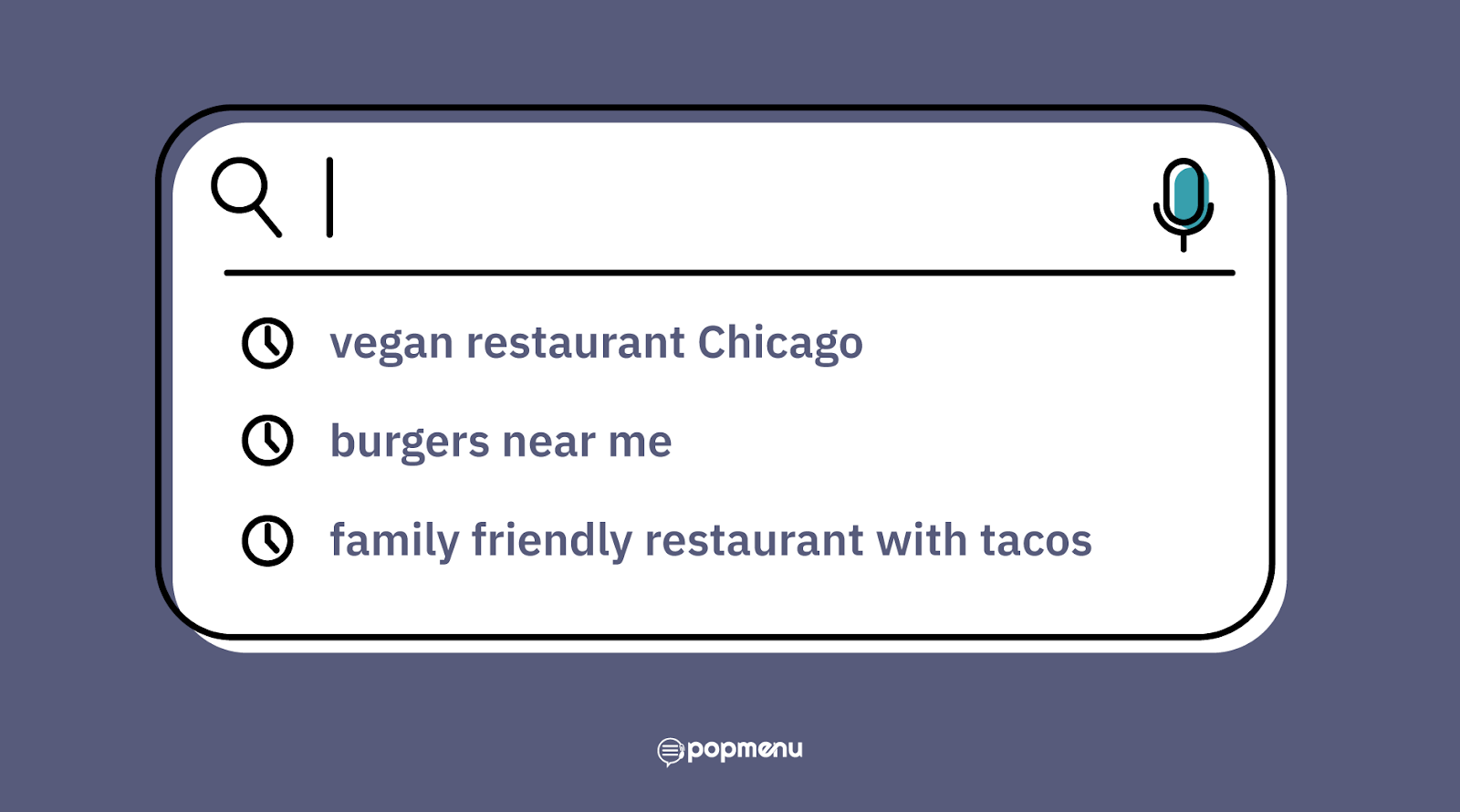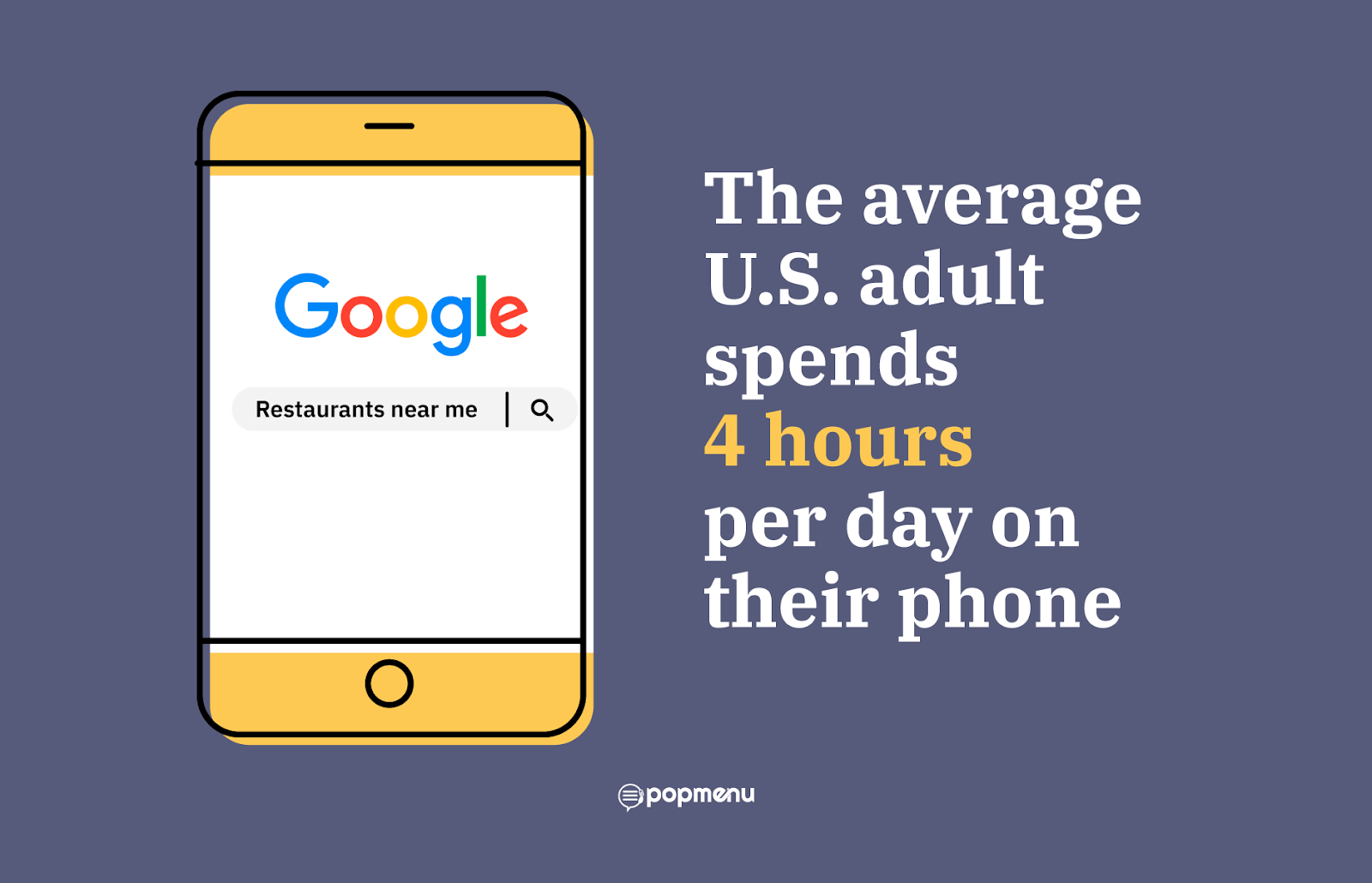
Why every restaurant needs an interactive menu

It's happened to all of us: You're searching for a new place to eat, or checking out a restaurant you just discovered. Browsing a restaurant website on your phone, you click "menu," and what comes up is a tiny, phone-screen-sized PDF file. The pictures are too small to identify the dishes they feature. The text is so small it looks like wavy black lines. You pinch and zoom, pinch and zoom, all over the screen to try to see different sections of the menu.

Is this the experience guests want to have when they look at your online menu?
In a recent survey of U.S. consumers, we found that 41 percent of people say their biggest pet peeve when trying to order food online is that the menu is hard to read. And nearly one in three consumers will immediately move on to another restaurant if they land on a PDF menu.
The data is clear: Today's restaurant guests want a better online menu experience. In the digital age, restaurants have to break up with their PDF menus. Restaurant menus need to go beyond just being digital or mobile-responsive—they need to be interactive.
Why Do Restaurants Need Online Menus?
More and more of today's diners are using the internet to make decisions about where to eat.

According to a study by OpenTable, 93 percent of people check online menus before visiting a restaurant. Having an accurate, up-to-date menu on your website is crucial for attracting guests—most will skip a restaurant if they can't find its menu online before going out to eat.
And while today's restaurant guests often use Google to find new restaurants, they don't typically search for a specific restaurant by name. The majority of restaurant-related searches—63 percent of them, to be exact—search for the type of food they're craving. That means a guest is more likely to land on your restaurant after searching for something like "vegan restaurant Chicago," "burgers near me," or "family friendly restaurant with tacos." If your menu items aren't online (and in text that's indexed and searchable by Google), those searches won't lead diners to your website.
This type of Google search is called an "unbranded search," and there are more than 300 million of them every month just for "restaurant near me." If your restaurant isn't treating those searches like the marketing opportunity they are—if you aren't posting a searchable menu online to capture that traffic from Google—you're likely missing out on many potential guests.
Benefits of Having an Online Menu
That's not the only reason to create an online menu, though. Compared to paper menus, online menus have a lot of benefits to offer restaurants.
They're Simple to Create
Making a high-quality online menu isn't quite as simple as just uploading a PDF, sure—but the extra time is well worth it. And today, many website builders and other digital tools have menu builders built right in, designed to make this process as straightforward as possible for their restaurant customers.
They're Always On
A potential guest can look at your online menu at any time, even while your restaurant is closed. It's a marketing tool that works for you 24/7.
They Promote Online Orders
Online ordering is still a growing trend. Many restaurant guests want to be able to place pickup and delivery orders right from restaurants' own menus, and that starts with having a complete, easy-to-read online menu.
They're Inexpensive
Your online menu lives on your restaurant's website, a tool you're already paying for regardless of whether you have a menu posted there. That means it's inexpensive to host a menu online, compared to paper menus which need to be printed, replaced when they're damaged, and reprinted if your menu changes.
They Can Be Updated Instantly
Speaking of updating when your menu changes, your online menu doesn't need to be redesigned and reprinted every time that happens. It can be updated instantly, which saves your restaurant both time and money.
They Remove Language Barriers

Thanks to today's technology, an online menu can be translated instantaneously to accommodate guests who speak and read a different language.
They're More Accessible
PDFs are not inherently accessible, and it takes a number of added steps to make them more friendly to guests with disabilities. An online menu is more accessible in many ways.
The Shift from Desktop to Mobile Browsing
As we've briefly touched on so far, an online menu is an essential tool for a modern restaurant—but it's not enough to just put a version of your physical menu online and call it a day.
PDF menus are notoriously difficult to access and read from small screens. And considering that 48 percent of all online traffic now comes from mobile devices, that's a problem.

From 2020 to 2021, mobile user share of online traffic increased more than 10 percent. The average U.S. adult now spends more than 4 hours per day on their mobile phone. That means your restaurant's website must be mobile-responsive—meaning it will automatically adjust to the best fit for the size of the screen being used to view it. That goes double for your menu, a document many guests are likely to access from mobile devices while they're on the go—like when they're already out of the house and hungry and search for "restaurants near me."
But at the rate that technology is advancing, especially in the restaurant industry, is a mobile-optimized menu even enough anymore?
More and More Diners Want Interactive Menus
There's a technology revolution happening in the restaurant industry, and it's affecting how guests want to experience everything from placing an order, paying for their meals—and even browsing a menu.
An interactive menu is an online menu that has elements your guests can interact with. Interactive menus usually make it easier for guests to browse your menu from their mobile devices, and include added features that help them learn more about each dish.
Interactive menus can include mouthwatering photography, reviews from other guests who have tried each dish, nutrition and allergy information, promotions, and more information that help guests learn as much as possible before choosing what to order.
Many interactive menus are also connected to online ordering systems, allowing guests to place their orders directly from the menu. This streamlines the ordering process—and makes it contactless, a big plus in today's safety-first environment.
The features that come with an interactive menu are there to help elevate the diner's experience. Here are just a few that are becoming more popular and widespread.
It's Easier to Make an Upsell
When guests order online from an interactive menu, it's easy to make automated suggestions to them based on what they've already selected and put in their cart. For example, adding a "Guests love this pairing" note that suggests adding an appetizer or dessert with an entree. Interactive menus are full of natural ways restaurants can upsell their guests, without coming across as pushy or sales-y.
You Can Collect Real-Time Feedback
Want to know what guests truly think about your menu and your restaurant? With an interactive menu, you can collect feedback in real-time, whether that's by asking guests to complete a satisfaction survey after they check out, or giving them the option to leave reviews for individual menu items.
Social Sharing is Built In
Social sharing is a great way for restaurants to spread the word about what they offer and bring in new guests. Interactive menus can have social media integrations built in that allow guests to share your menu to Facebook, tweet about the order they just placed, or share their favorite dish photo to Instagram—all with just one click.
Remarketing Can Be Automated
Interactive menus collect data from guests as they use them—including their contact information, items they've ordered, and other useful data points. Restaurants can use this data to automate their remarketing efforts—say, sending an email to a guest after they place an order, offering them a discount on a repeat visit, or reminding guests about items they've ordered and liked in the past. In these ways, interactive menus help encourage guests to make repeat visits to your restaurant.
Staffing Costs Go Down
With an interactive menu, you can lower your staffing costs because you need fewer front-of-house staff at any given time. Think about this: The amount of time employees spend actually taking food to guests is just a small part of their time on the clock—most of it is spent dropping off menus, answering guest questions, waiting for guests to be ready, taking their orders, dropping off checks, and picking up and running payment. An interactive menu allows guests to do almost all of those things on their own, so all your employees have to do is drop off their food.
Popmenu's Interactive Menu Technology Is One-of-a-Kind
If you want patented, one-of-a-kind, interactive menu technology, then your restaurant needs Popmenu.
Popmenu has taken all the benefits that come with interactive menus and enhanced them. Not only are our menus dynamic, creating an experience for guests with individual dish reviews and "Pops" for their favorite menu items; Popmenu has also created an interactive menu platform that's just part of a fully integrated digital toolkit for restaurants.
With Popmenu, you get the best interactive menu available today. But you also get a mobile-optimized website designed to host it, direct online ordering, automated marketing tools, front-of-house solutions like waitlist management, social media integrations, and so much more. Popmenu is truly the best way to get the most out of your interactive menu.
As technology revolutionizes the restaurant industry, don't get left behind. Invest in the only all-in-one platform that helps restaurants own their entire digital presence, from first impression to final bite. Schedule your free Popmenu demo today.





.jpeg)






